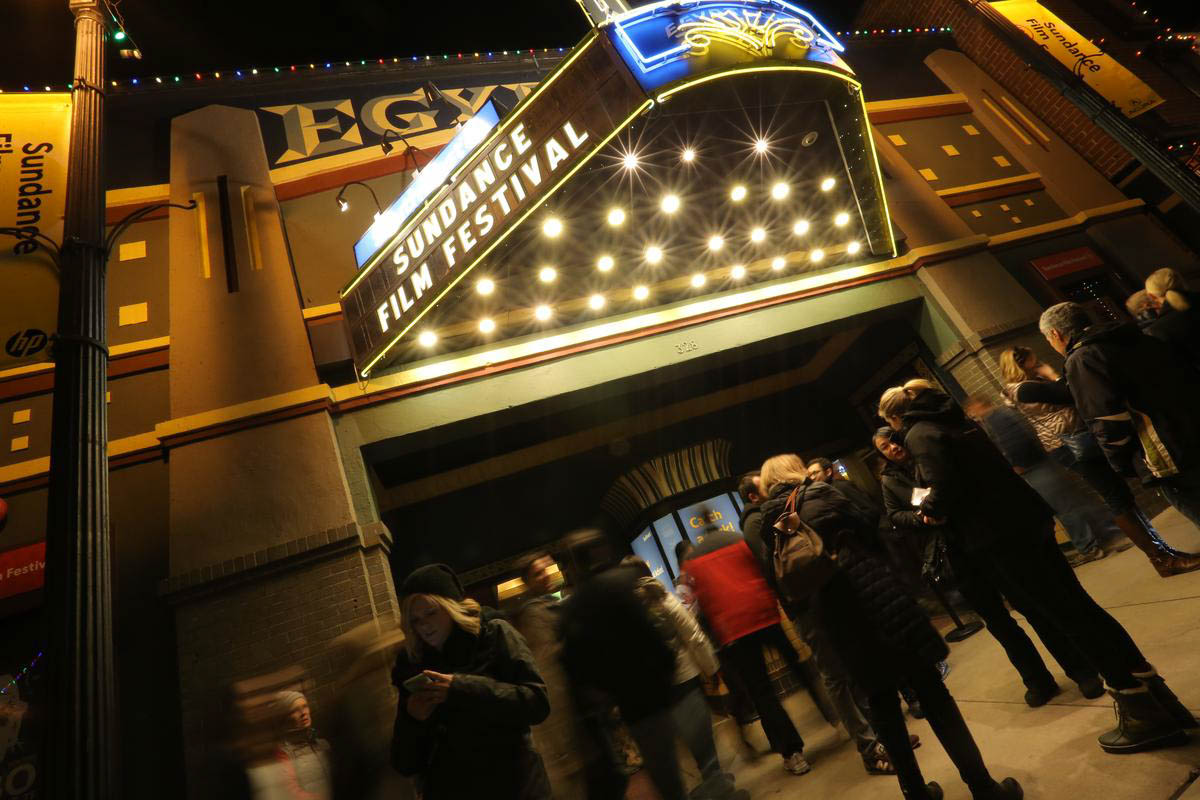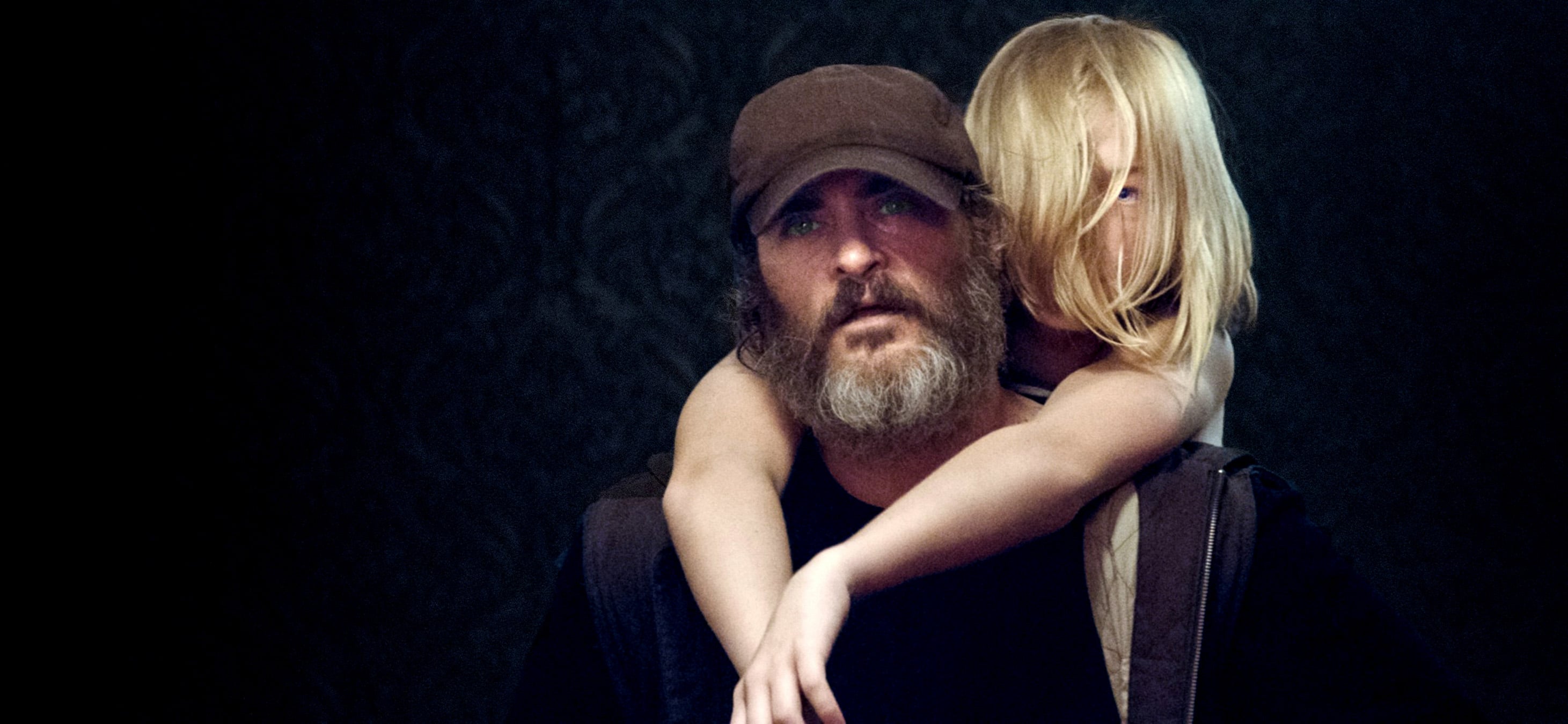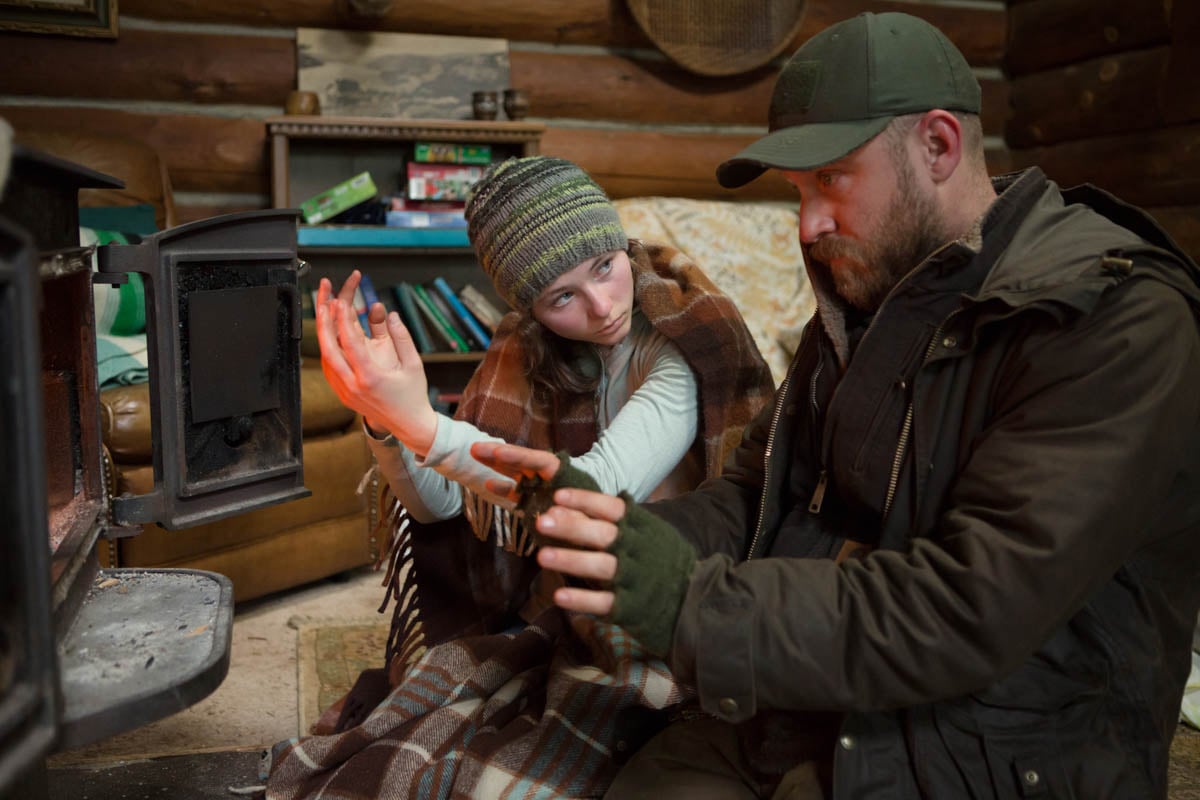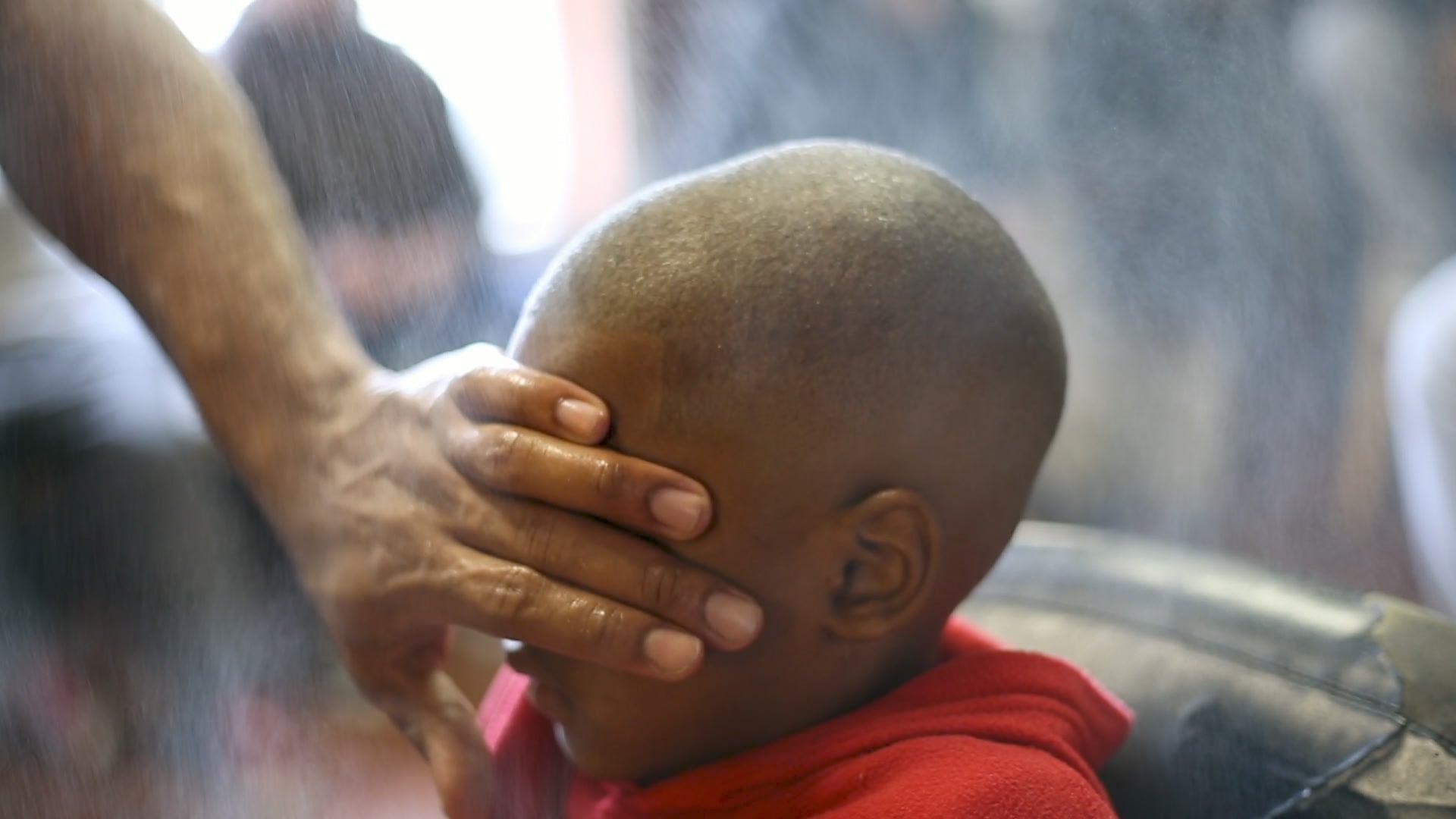
This is one article in a series of Sundance coverage – follow The Daily’s reviews of select Sundance films every day this week, extending into next week.
Brief notes, now, on three vital films I was able to see at the 2018 Sundance Film Festival in Park City, Utah. These three alone prove that the state of narrative cinema is alive and well — if not on the widescale horizon, then at least in dribbles and pockets.
RaMell Ross’s “Hale County This Morning, This Evening” and its subtle poetry knocked me the hell out of my seat — easily the biggest revelation for me at Sundance. The other two films — Debra Granik’s “Leave No Trace” and Lynne Ramsay’s “You Were Never Really Here” — both physically affected me with their visions of specific people swallowed up by brute, uncaring worlds. Debra Granik inspired tears of togetherness and separation with “Leave No Trace,” while Lynne Ramsay provoked screams of horror and revulsion (never gratuitous) with “You Were Never Really Here.”

Scottish director Lynne Ramsay’s airtight “You Were Never Really Here” starring Joaquin Phoenix is the latest in the scuzzy-city-neo-noir canon (see also: “Taxi Driver,” the films of Dan Gilroy, the oddball if overly-Arty “Drive,” and the fractured 1967 classic “Point Blank”); Ramsay’s contribution is equal parts cathartic violence, Catholic grace, and taut cinematic precision. Like “Point Blank,” it goes back and forth in time to reveal why its antihero is so traumatized. As a veteran, he saw children slain in a Middle Eastern desert; as a police officer, he opened a dock container filled with dead smuggled girls. By the end, the film is so choked up with Phoenix’s haunted past, one begins to feel like they are in a crisper, tighter version of Phoenix’s PTA film “Inherent Vice” (2014): Hazy, lost, confused, but with none of the Pynchon absurdity to lighten the mood.
Phoenix plays “Joe” (what a name), a private-dick hitman whose weapon of choice is the humble hammer. Joe is the modern-day Misfit: a morally incoherent drifter (yet never morally confused) who feels unconscious grace in violence and who wants to save others from feeling the same. Joe is assigned to kill the men who kidnapped Nina (Ekaterina Samsonov), the daughter of a local politician, and rescue her safely. Soon, though, he uncovers a citywide conspiracy far more vast and disturbing.
In this thriller, a boy’s best friend (and his only friend) is truly his mother. An unabashed momma’s boy, Joe tends to his ailing mother (Judith Roberts) when she falls asleep during the opening of Sam Fuller’s “The Naked Kiss” (1964). In one of Ramsay’s many cinephilic in-jokes [1], Joe and the mother confuses it with Hitchcock’s “Psycho” (and after all, aren’t these three basically the same film?). Aptly, the Ramsay film uses these two landmarks of the American macabre as its central guideposts. Fuller and Ramsay take child-molesting perversity as a truth universally unacknowledged in the city. Meanwhile, in eras where audiences are increasingly desensitized to images of blood and death, Hitchcock and Ramsay cleanly elide violence with knife-like editing in order to make it more present, more real. Ramsay’s heroes (Joe and his mother, the kidnapped girl Nina) are all survivors of traumas too numerous to count, too ubiquitous to pinpoint, too horrifying to relive (but relive them they must, if they wish to lead honest lives). Thriving was never an option for Ramsay’s characters; surviving is the only viable option, and even this often seems impossible.
[1] Ramsay also harkens back to the unforgettable bullet-pierced pince-nez of the Odessa woman in “Battleship Potemkin” (1925), and has conceived what must be the most chilling water scene since Charles Laughton’s and James Agee’s “The Night of the Hunter” (1955).
The city does not let them live their own lives. Joe’s compulsion to love his fellow (wo)man finds him at odds with the destructive passivity of the Big City. To survive, he needs to ignore everyone around him, because one person’s life-baggage, his own, is already too hard to handle. The case of young Nina — and the nameless girl he cannot save — will break him.
Ramsay may be serious, but she is still funny. Her gallows’ humor is breathtaking. Massacres are set to Rosie & the Originals’ “Angel Baby,” the first song you’d think to waltz to at a 2 a.m. milkshake-diner, but the last song to which you’d want to bash someone’s head in with a hammer. Joe forgives a dying hitman by not torturing him, but harmonizing with him to a Hollies song. The humor has a sophistication that is not present in, say, Samuel Maoz’s “Foxtrot,” a heavy-handed thought experiment which played twenty-four hours before the Ramsay film, in the same Park City Library. Maoz applies Levity and Humor like plaster of Paris to patch up queasy transitions. The comedy of Maoz’s traumatized Israeli soldier suddenly bursting into a foxtrot — and the obvious military pun in the title — is edgy and intriguing at first. But stack it next to Lynne Ramsay, and it becomes clear whose hysterically tragic humor cuts deeper; she doesn’t even seem to be trying, because the humor unfolds so naturally.
In contrast to the slickly contrived “Foxtrot,” there is not a wasted moment or dishonest shot in the smoothly conceived “You Were Never Really Here.” Its trips into hallucinogenic violence — especially towards the end, where the absurd melts into reality with a waitress’s spine-chilling “Thank you, come again” and a moment in which everyone in the audience screamed in terror — are always earned, unrelenting, brutal, yet never mired in hip nihilism (Quentin Tarantino) or, worse, cowardly non-belief (Jim Hosking’s “Evening with Beverly Luff Linn,” an Aubrey Plaza film which makes you forget you are watching an Aubrey Plaza film — which should be a criminal offense in all 50 states and Puerto Rico).

In terms of feels, I was overwhelmed most by Debra Granik’s “Leave No Trace,” a father-and-daughter yarn which treats the timeless theme of alienation without fear or cliché. A homeless-by-choice dad and daughter (Ben Foster and Thomasin McKenzie) live in the margins of Oregon’s forests, surviving by living out in the wilderness. Theirs is not at all a Romantic or dreamy idyll. His name is Will, and he is an Iraqi War veteran who has given up all hope of ever integrating back into civilization. His daughter Tom, wise beyond her years, supports him through thick and thin. But once Tom gets a taste of what community feels like, she wants it — at the cost of supporting her father, who is in bad shape but who refuses to let it show.
I cried with terrible fury, not because I saw crying on screen, but precisely the opposite: Everyone holds it in so skillfully, so destructively. They must suppress themselves, if they are to survive an uncaring 2018 America’s lack of empathy with an individual’s plight. (To see what happens when we do try to care, watch “You Were Never Really Here.”) In this regard, Granik’s sparsity — stoically-faced actors, to-the-point dialogue, shots which artfully present poetic facts — reminds me of Robert Bresson (“Au Hasard Balthazar,” “L’argent”), who also had no use for indulgent shots that didn’t lead the film’s spirit to a higher place.
There is a moment in “Leave No Trace” — a non-underlined meeting between Tom, a service dog, and an ex-military medic in a tiny role — that reduced me to savage, sudden tears. The quiet, backgrounded tragedy (the medic, barely a supporting actor, offers his dog to Tom to help her dad out, because, in the medic’s words, “he’s sure helped me”) still affects me gravely when I think about it. And I can’t think about it long enough, or else I start to feel hopeless.
The Bressonian element of “Leave No Trace” extends to both artists’ interest in animals, their unreadable expressiveness, their knowledge of mental arenas where humans can never enter. Granik offers up hope — hope that calm currents exist where the disturbed veteran’s problems pool into the dog’s, and become one, and catharsis precedes peace, alienation precedes belonging. Even if the dog cannot understand a word Will says, maybe the dog will ease him into a community. We think this hopefully. But judging by what Granik ultimately suggests, those hopes are just that.
Debra Granik launched the career of Jennifer Lawrence in 2010 with the magnificent “Winter’s Bone,” and it seems as if she’s poised to do the same with Thomasin McKenzie. As the beautifully tough Tom, everything McKenzie says and does suggests an endless series of hidden mental layers, ones we can never access yet which we know must exist. She pets and tends to a fluffy rabbit as if she’s been doing it her whole life. She stands on top of a neighbor-boy’s makeshift house with Alice-like, not-quite-romantic curiousness. Her questions, delivered in a quivering New Zealander accent, are lofty yet personal: “Why do the kids look at me different?” Tom is trying to figure out her unclear future — but to do this, she must leave behind her father, whose slow metaphorical death is painful for her (and us) to endure. All the time, McKenzie holds scenes together purely with her eyes, their haunted and too-wise blankness mirroring her father’s soul.

Another film with poetic grace in a community that rarely sees their individual problems expressed: RaMell Ross’s “Hale County This Morning, This Evening.” Ross is a Black photographer who made his feature film debut at this year’s Sundance. His film follows two Black teens, Daniel and Quincy, in Alabama’s Black Belt; Daniel attends Selma University, while Quincy fathers a son and, later, twins. It is ostensibly a documentary, but its elastic playing with time (long chunks of uninterrupted home video-ish plan-sequences, staccato stabs of free associations) and its off-center treatment of its central concern (how to present Black bodies in a cinema that was not designed to show off dark skin as beautiful) makes it something quite new and strange…yet familiar (to me).
What is “Hale County”? It is truly a moving picture. Of course, every film is technically a moving picture. However, a good chunk of them — the most unimaginative and non-gutsy — consist of people going through rote motions to convey abstract ideas with little specificity (“Three Billboards,” “The Untamed,” “And Breathe Normally”). At their worst, they merely mechanically record what’s in front of the camera, accomplishing nothing (this year’s nadir will be “Beverly Luff Linn”, an anti-human anti-comedy). “Hale County” rejects that notion. Ross knows the moving image is too precious to be treated frivolously, and so he advances cinematic art with poetic, philosophic, and political possibilities — all in their own spheres, moving parallel to each other.
It primes the viewer in the history of the marginal image. Plainly, Black and Brown people have rarely had the privilege of seeing themselves on the wide screen in unfettered, un-signposted lyrical trips. (The artists who do make such films, like Julie Dash and her “Daughters of the Dust” [1991], don’t have the extensive career of their white counterparts.) Ross makes the point clear by returning to the ruins of a decrepit Southern plantation and interpolating footage of Bert Williams in the recently-rediscovered “Lime Kiln Field Day” (1913), one of the earliest surviving films with Black performers. Williams, a popular Black vaudevillian of the early 20th century, dons blackface; here, Williams sees right through the racist comic conventions of his time by yanking them back for his own purposes, mocking convention by shining a light on the perverse doubling: a white blackness, masking the real human underneath. In “Hale County,” Williams imagines a future beyond his time, a future carved out by a generation of Black filmmakers (Juano Hernandez, Dorothy Dandridge, Sidney Poitier, Julie Dash, Ivan Dixon, Kathleen Collins, Charles Burnett, Haile Gerima, Spike Lee) whom he cannot imagine, yet whose spirits he nonetheless believes will come to fruition.
To achieve the film’s hallowed intimacy, Ross lived with the two Black teens he filmed over a period of five years. To know is to better express, to produce feverish images which can exist outside of space and time — but which always return to their source, eerily.
Ross has made a major work of our times, in which every shot (girls dancing during a lightning storm; a knockout long-take of basketball players horsing around in a locker-room with a couch, with one player texting and anxiously surveying his friends as if he has something to say [he says nothing]; a post-Robert Frank funeral where the Black mourners move in one direction and a shiny new car zips past them along a stretch of highway, their paths never crossing) is doing something, forging and collecting as many truths as it can carry, and letting them talk back to each other as in a moving picture book.
In the future, I hope to more closely explore the shot-by-shot beauties of “Hale County.” But Sundance — with its critical-thought-killing rush and din, the refusal to stew within the world of a just-finished film, the urge to pick up the smartphone and see what’s the next big Hit we can snag tix for — was not the place or time to do so.
“You Were Never Really Here” will be released by Amazon Studios in April of this year.
Contact Carlos Valladares at cvall96 ‘at’ stanford.edu.